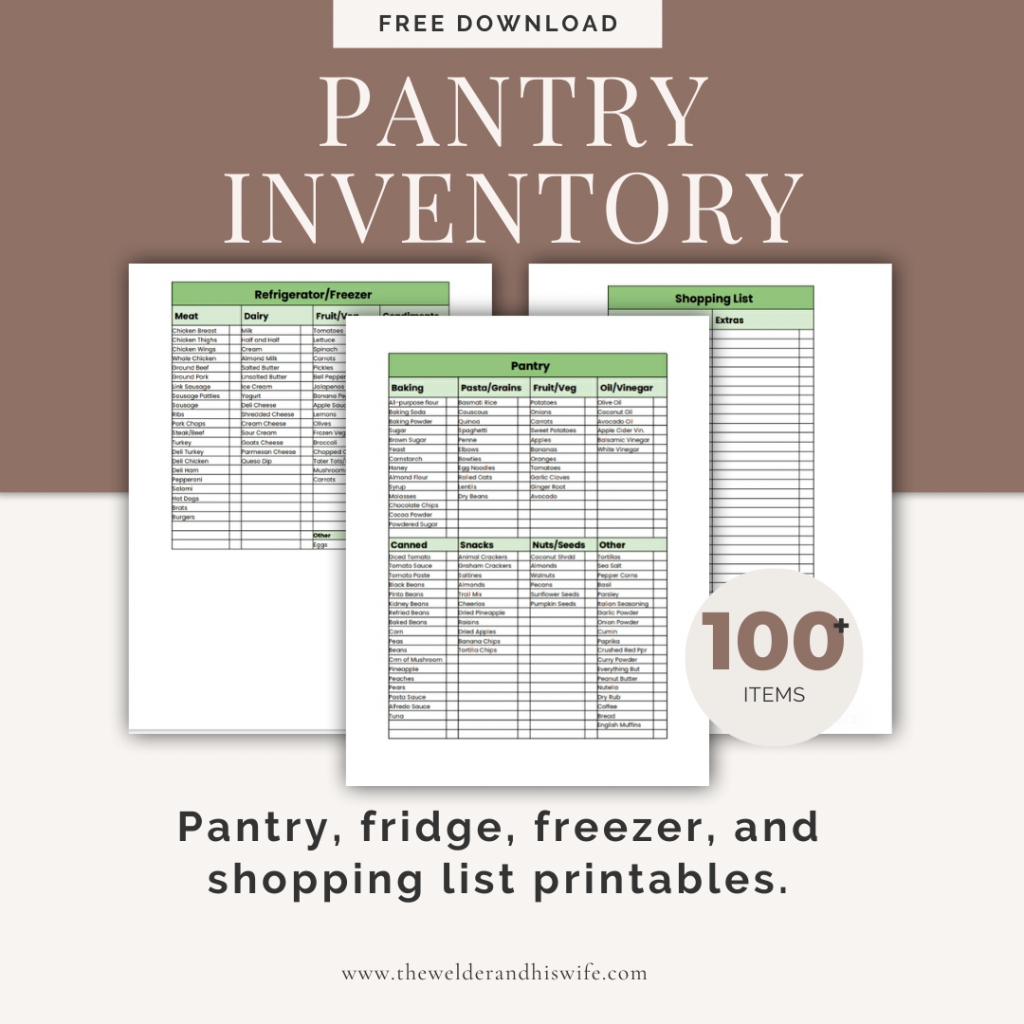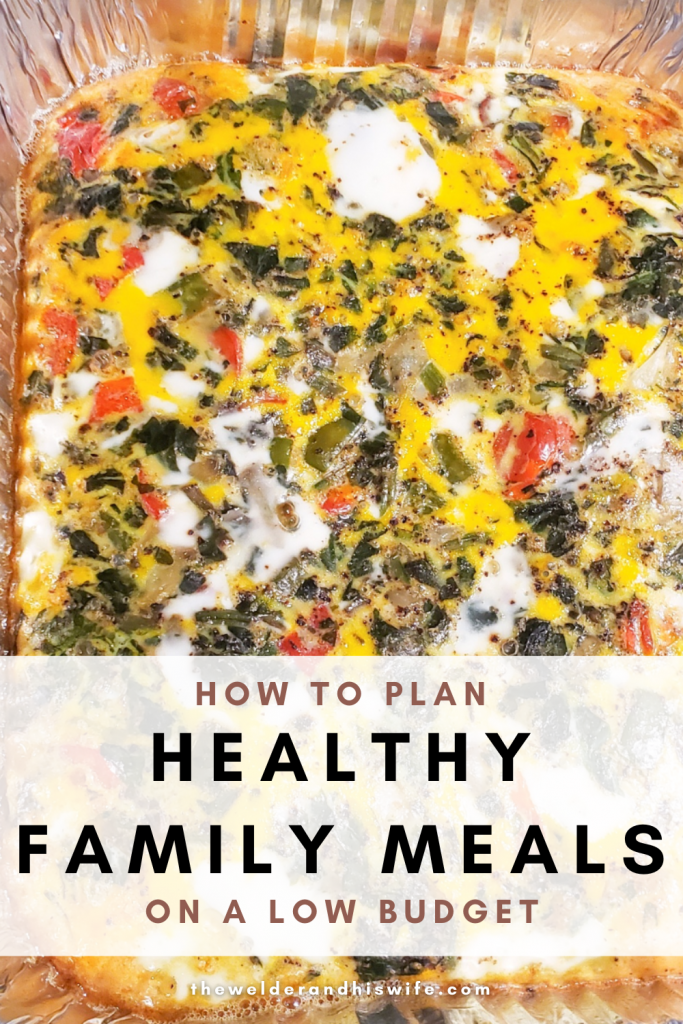As food prices continue to rise, it is difficult to piece together how to plan healthy family meals on a low budget. These are some things that help us make it work as a family of 4 spending approximately $0.83 per meal as our monthly grocery budget.
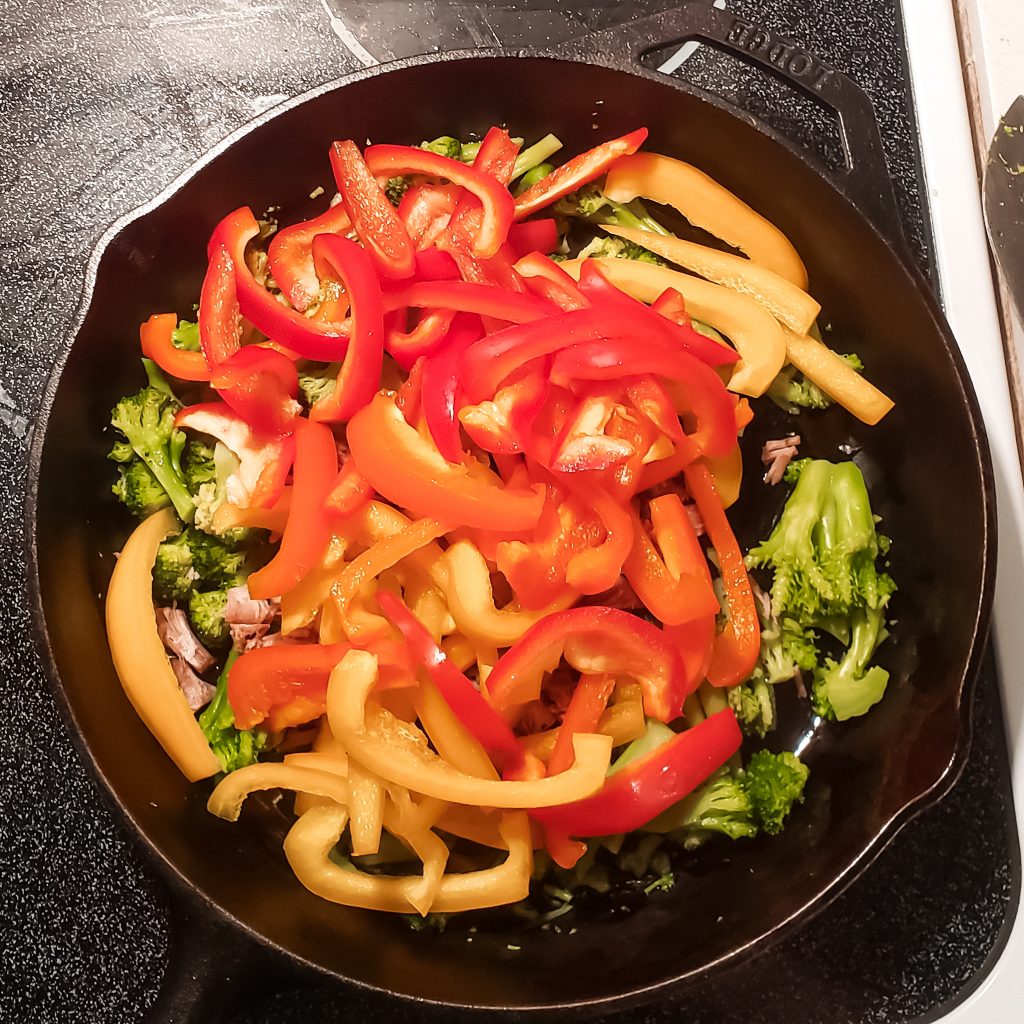
Healthy Family Meals
It can be tricky to find meals that meet three significant criteria: healthy, affordable, and family friendly. One might argue that you can’t have all three in a single meal, but I disagree. While foods are being produced in less healthy ways and simultaneously getting more expensive, oftentimes the most difficult factor is in getting young children to eat the healthy meals we manage to prepare.
What makes for a healthy meal
Healthy meals provide the nutrients and micronutrients we need to fuel our bodies for daily activity as well as impacting other essentials like our immune system or balancing our hormones. Because we all have different bodies and lifestyles, what may be healthy for some may not be healthy for all. A 50 year old woman who works seated at a desk all day should not be eating the same way as a 19 year old male athlete, for instance.
However, there are fundamentals of healthy eating that can be carried across the board and adapted to various lifestyles. We know that sugars provide short bursts of energy rather than the energy needed for long days, and that it can be a hormone disruptor. We know that consuming far more calories than we use in a day leads to fat storage. We know that a lack of hydration can wreak havoc on all of our body’s systems. And we know that we need fiber in our diet in order to move our digestive system well.
There are many more scientifically investigated truths we know about how food and our bodies work, but let’s lay a foundation here for what we are looking for in a “healthy” meal.
We are looking for meals that provide adequate amounts of proteins, fats, sugars, and fiber, that promote energy to fuel us throughout the day, and that allow our body to “recover” from the calorie load before the next day’s caloric intake.
Keep in mind that how you eat can play a much greater role in “healthy eating” than what you eat, but for the purpose of this topic, we are focusing mainly on how to plan healthy family meals on a low budget.
Based on the premise above, we will be looking for proteins from meats, fishes, beans and legumes, and eggs, primarily. To help the meals go further, we need to find healthy “fillers” that truly satiate rather than starches that do not produce long term energy. This will come in the form of healthy fats and sugars. Sugars give immediate but not long lasting energy, while fats give a long term energy that allows you to get to the next meal easily without needing to snack.

Affordable ingredients
There are many ways to save a little money here and there while grocery shopping. Coupons, sales, bulk purchases, and off-brand purchasing all come to mind. Some people are willing and able to go to several different stores to shop their whole grocery list to get the best deal on every item. But for most of us, shopping in one place and knowing what to look for is the most practical option.
When purchasing meats, poultry is often the cheapest, and chicken is the cheapest of the poultries. Larger cuts, like a whole chicken, or leg quarters, are the cheapest per pound. This is partially because they are the least “processed” at least in a cutting-up sense, and also because they’re bone-in which means that part of the weight you’re paying for will be discarded rather than consuming the whole portion.
Pork and fish are generally the next tier up in pricing, followed by beef. The cheapest way to get pork and beef is to buy it ground, because it really doesn’t matter much which part of the animal they’re throwing into a meat grinder, so smaller bits that would otherwise be waste from another cut will often become ground pork or ground beef. And then of course, pricing will go by the cut, the size, bone content, fat content, etc.
While these sources of proteins and fats are arguably the most common and the most desirable, it is cheaper to find protein in beans, legumes, and eggs. Dried beans are fairly cheap to purchase, as are cooked canned beans. Dried are cheapest, and you also get the option of soaking for your desired amount of time, which can help with making beans more easily digestible if that is something your body struggles with. There’s the added benefit that they don’t have the additives that cans of pre-cooked food needs in order to be shelf stable for so long.
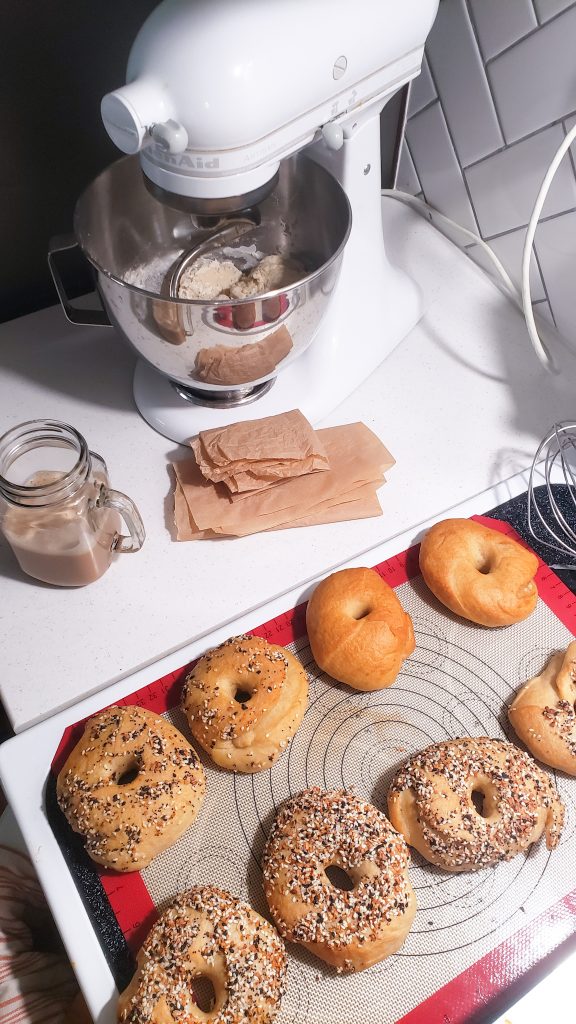
Eggs are a commonly recommended source of protein. They are fairly affordable, easily found, and versatile in the kitchen. There are many ways to consume eggs even if an “egg dish” isn’t high on the list of exciting foods for you or your family.
Healthy vegetables and fruits, such as those high in fiber or other nutrients can be purchased most cheaply when they are in season. This is one reason that seasonal eating is a great idea even if you do not grow your own garden or shop at a farmer’s market. Seasonal eating means that you purchase and eat what is being harvested locally at that time. This removes shipping costs or costs of preserving food long enough to be shipped to grocery stores across the country.
Another way to save money is to buy food at bulk or discount stores. Places like Costco and Sams Club sell bulk portions of food at a slight discount compared to conventional grocery stores. There are also stores that sell food that is closer to expiring than other stores. I used to live near a store that everyone called “the bread store” and all sorts of bread were sold at half off or more because they were only a few days off from their expiration date, or they’d passed the “sell by” date but not the “best by” date.
Buying food seasonally or on discount and preserving it is also a great option. This can be as simple as throwing a loaf of discount bread in your freezer, or chopping cheap vegetables to freeze for later. I often buy bulk packs of chicken and freeze it in family-dinner sized portions. Even canned goods that have been opened like soups or vegetables can be frozen.
If you want to take it a step up, you can learn to pressure can meats, vegetables, fruits, etc. Preserving can range from freezing and canning to dehydrating or freeze drying and storing dry.
How you take advantage of the low ticket grocery items will make a huge difference in your monthly grocery budget, especially as a large family.
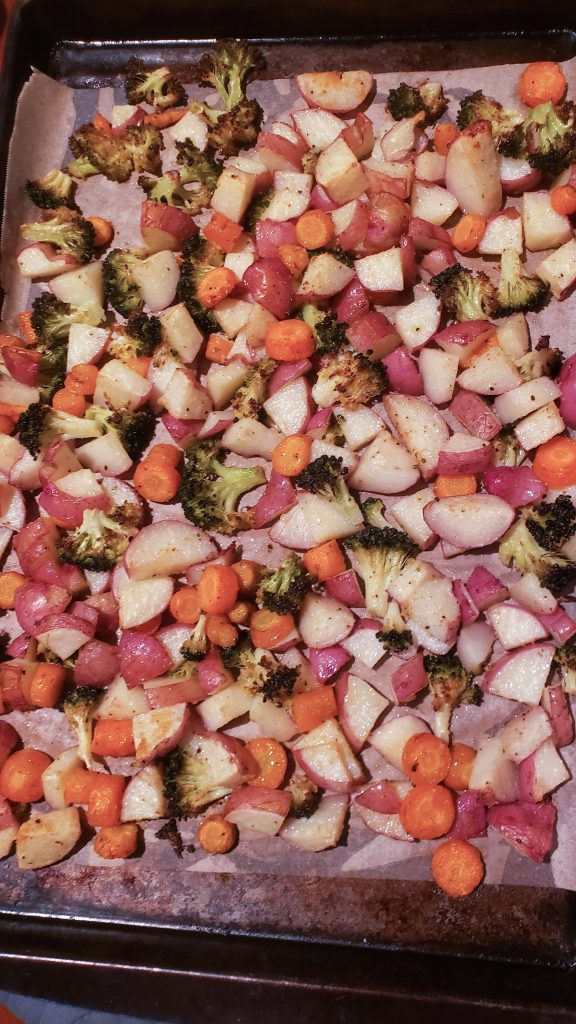
Healthy meals to make with affordable ingredients
When I first started teaching myself how to cook real meals (ie, not batch cooking for one out of pure laziness), I was always disappointed when I searched through cookbooks. I couldn’t make anything from these recipes because I never had every single ingredient and I definitely didn’t have the know-how or confidence to improvise. And I couldn’t just go shopping based on a set of recipes for the week because those sorts of shopping trips always exceeded the grocery budget.
What I needed most was to grow my cooking imagination.
There’s a general concept of cooking that I adopted first and tried to run with. A primary protein, a vegetable side, and a starch side, seasoned to match or compliment.
This led to me to grilled chicken with rice and steamed veg with an “asian” sauce. Stir fry. It let me to shredded pork with rice, onions, peppers, and beans. Tex-Mex. Ground beef, corn, peas, green beans, tomatoes, mashed potatoes. Shepherd’s pie. Okay, I was starting to get the idea.
Learning to use your ingredients to make healthy meals is just a huge challenge of mixing and matching. And planning healthy family meals on a low budget is a challenge of mixing and matching tasty and complimentary nutrient dense foods in a cost effective manner. It’s just a level up.
Some of my family’s favorite cost effective meals are:
- Stir fry: chicken breast or thigh chunked or shredded, broccoli, carrots, or any miscellaneous vegetable (fresh or frozen) over rice with a soy sauce or soy alternative, or a premade sauce. If sauce isn’t in the budget that week, use seasonings to incorporate the essential flavors of the dish.
- Roasted dinner: baked chicken thigh or drum sticks with roasted potatoes and broccoli
- Tex Mex: shredded chicken cooked in taco seasoning served over “dirty rice” or similar, and leftovers become a taco or quesadilla if you have tortillas
- Spanish: a pork or beef sausage (or kielbasa if that’s what’s available) cooked with corn and beans and tomatoes into rice with a tomato based sauce
- Italian: chicken or sausage cooked into a pasta dish (bought or homemade) with an alfredo sauce or an oil and vinegar sauce, herbs, and dry shredded cheeses
- Pizzas: sourdough crust or a no-rise dough (there’s no middle ground with us) with the classic sauce and cheese, or with leftovers thrown on such as cooked peppers and onions, sausage, chicken, pulled pork, you name it it can be a pizza topping!
- Salads: garden salad, chicken salad, tuna salad, pasta salad – all of these can be made cheaply and if you put thought into it they can be made healthy too. Just try to outweigh the carb with healthy proteins and fats to pull it all together.
The most essential tip I can give you to keep your low budget meals interesting and on a longer rotation between repeats is to learn about spices and herbs and how to make your own combinations and blends, as well as your own sauces, gravies, and marinades. Herbs, spices, and sauces can take the same chicken and rice from Asian to Mexican to Mediterranean faster than you can say “yum”!

Encouraging kids to eat healthy meals
Getting kids to eat the food on their plates after you’ve put so much effort into healthy family meals can be so daunting. Here are some of the practices we try to keep in our home to expand our kids’ palette for different foods.
- Model trying new foods and not making faces or using negative words about any foods even if we don’t like them (my husband hates olives but I’d like my kids to enjoy them!)
- Talk about different elements of the food other than the taste – how crunchy or soft it is, how it smells, what it is called, where it comes from or how it is grown, what it is seasoned with, etc.
- Develop their vocabulary about food so that they can describe elements they enjoy or dislike. Ask them why they like their favorites and why they avoid others and help them learn new words to describe their tastes.
- Explain to them that as they get older their taste buds on their tongue change and grow, so a food they disliked a long time ago may be tasty to them now, so it is worth trying.
- Tell them they must try it at least one time before saying they dislike it in the first place.
- Tell them about which foods help which parts of their bodies to grow – carrots are good for eyesight, fibrous foods are good for your belly and digestion, liquids and water are good for flushing away sickness, etc.
- Avoid making them eat every bite of something and increasing the negative association with food (“mom MADE me eat x”) and instead encourage trying everything on their plate at least once. Let them know they won’t get a different food so they need to at least eat enough to not be hungry anymore.
- Pair a new or “risky” food with a comfortable or familiar food so that there is always something served that they understand and know they’ve liked in the past rather than everything in a dish being new or unfamiliar and therefore “scary” or “yucky”
- Allowing and encouraging kids to help with or observe the cooking process can also help them understand what is in their food and feel a sense of ownership over the finished meal, and therefore more willing to eat it (especially if they can tell daddy “look what I cooked” when he gets home).
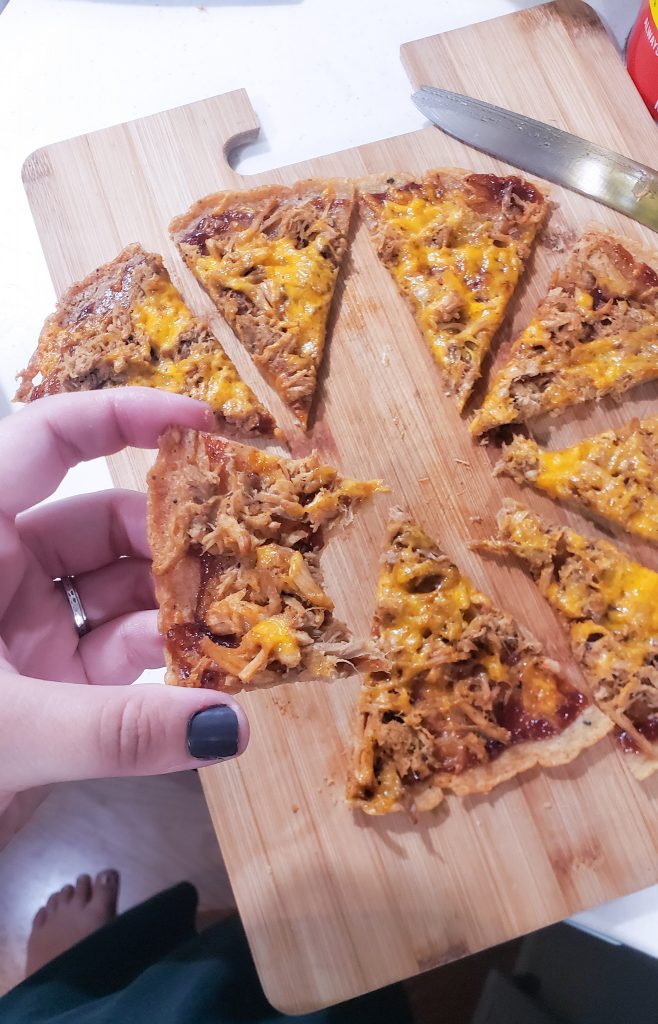
Healthy Grocery List and Meal Plan for One Week
In our family we are currently feeding four – two adults and two children. Our normal monthly grocery budget is in the ballpark of $300, which if you break it down is $10 per day, $2.50 per person per day, or $0.83 per meal. I think that qualifies as eating on a low budget!
Here is our usual grocery shopping list:
- Chicken breast or thighs, family sized package (raw, unfrozen)
- Frozen vegetable medley (couple bags)
- 5lb potatoes
- Lettuce
- Milk
- Lemons
- Canned tomatoes and/or sauces
- Apple juice
- Eggs (2-3doz)
- Butter
- 3lb apples
- Bananas
- Coffee
- Half and half
- Large tortillas
- Mayonnaise
- 1lb ground pork
- Cheese (shredded or slices, sometimes block)
- Peanut butter, jam
- Cereal sometimes
- Tortilla chips sometimes
- Sour cream and salsa sometimes
- Mandarins sometimes
- Jalapenos sometimes
- Fresh cilantro sometimes
- Canned fruit sometimes
- Ground beef sometimes
- Bell peppers, mushrooms, carrots, sometimes
Things I buy in bulk or have to purchase less than once per month:
- Unbleached all purpose flour
- Rice (20lb bags get us a long way)
- Pasta
- Quinoa
- Rolled oats
- Sugar, brown sugar, baking soda, baking powder, vanilla, etc
- Garlic cloves
- Ginger root
- Pink himalayan sea salt
- Olive oil
- Coconut oil
- Pepper corns
- Garlic and onion powders, italian seasoning, basil, cumin, parsley, curry powder, taco seasoning, etc.
- Vinegars
- Other oils
With these ingredients, or even just a portion of them (we don’t buy ALL of them EVERY week, these are just items that commonly make the weekly list) you can make endless combinations of meals. The following are some recipes from other people that I have used, and modified, to fit the ingredients I have on hand or in the garden.
- Sheet Pan Chicken
- Dirty Rice
- Bean Stew
- Chicken Alfredo
- Ground Beef Tacos
- White Chicken Chili
- Pizza Dough
- Sourdough Bagels
- Sausage Rice Skillet
- Ground Beef Stroganoff
- Tuna Casserole
- Chicken Fajitas
- Chicken Stir Fry
The “Pantry List”
Lastly I want to leave you with something that helps me the most both with staying on budget, knowing what I have on hand, and choosing what to use in my meal planning. This is my “pantry list” though it also includes what I have in the freezer and refrigerator.
The idea is that I keep track of the number of each thing I have and if I’ve run out of something. This means that I can check this list to know if I can make spaghetti for dinner or if I’m out of pasta. Or if I can make pizza or if I’m out of mozzarella. By taking the second to update it when I run out of something, I both keep track of what I can cook, and also instantly create for myself a shopping list for my next trip. I usually just make copies when one gets ratty but I plan to laminate one soon so I can just use a dry erase marker and wipe it off for a new use.
